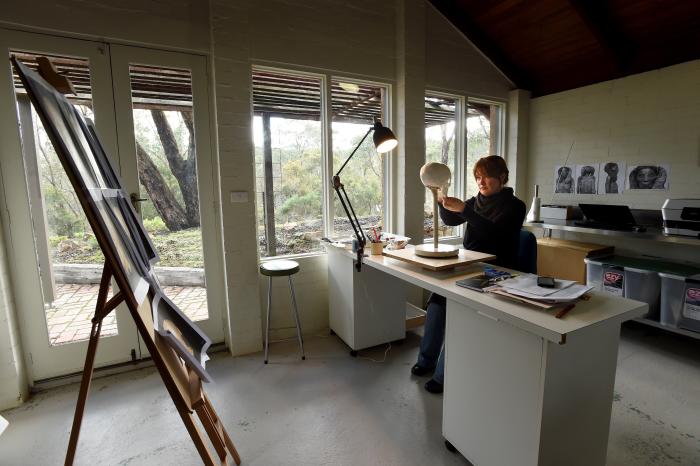A joint effort between the University of Melbourne’s Faculty of Medicine, Dentistry and Health Sciences, medical researchers, forensic scientists, 3D printing experts, Egyptologists and a sculptor, Meritamun, an 18 to 25-year-old Egyptian woman believed to have lived at least 2000 years ago, received a complete facial restoration thanks to a 3D printed model of her ancient skull.

The curator and the anthropologist
Meritamun’s skull, whose name means “beloved of the god Amun,” was unexpectedly found in the basement of the medical building at the University of Melbourne. As is often the case with Egyptian burials, the skull was wrapped tightly in bandages and covered in oil and embalming fluid. Dr. Ryan Jeffries, a parasitologist and museum curator cautioned against removing the bandages so as not to damage the specimen or, more importantly, disrespect the sacred burial through which the skull was preserved.
Dr. Jefferies nevertheless understood the importance of studying this remarkable relic in order to answer pressing questions of how she died, where and how she lived, and what she ate. Fortunately, the team at the university was able to use CT scanning technology on the skull, which, according to Dr. Jefferies, “opened up a whole lot of questions and avenues of enquiry,” and led to a “great forensic and teaching opportunity in collaborative research.” Dr. Varsha Pilbrow, a biological anthropologist who teaches anatomy at the university’s Department of Anatomy and Neuroscience, was very supportive of restoring and displaying the skull, saying:
“This way she can become much more than a fascinating object to be put on display. Through her, students will be able to learn how to diagnose pathology marked on our anatomy, and learn how whole population groups can be affected by the environments in which they live.”

The Egyptologist and the technician
The original skull was scanned at the Victorian Institute of Forensic Medicine and identified as an Egyptian female by Dr. Janet Davey, a forensic Egyptologist from Monash University. The skull was expertly preserved in the mummification process, which allowed Dr. Davey to meticulously examine Meritamun’s small, angled jawline, rounded eye sockets, and the narrowness of the roof of her mouth. Dr. Davey’s observations were later confirmed by expert anthropologist Professor Caroline Wilkinson from Liverpool John Moores University in the UK.
The skull model took a total of 140 hours to print on a standard consumer-level 3D printer. Gavan Mitchell, an imaging technician from the Department of Anatomy and Neuroscience printed the skull in two sections in order to achieve the most detailed versions of the jaw and the base of the skull. As seen with Meritamun, the level of multiplicity afforded by 3D printing will potentially allow students and researchers to “replicate specimens with really interesting pathologies,” according to Mitchell.
Finally, the 3D printed skull served a base upon which sculptor Jennifer Mann reconstructed an anatomically accurate face using a skillful combination forensic and artistic abilities. The precise process involved using plastic markers on the printed skull to identify tissue depths at key points on the face, based on averages of Egyptian population data. Mann then sculpted clay onto the skull at key muscular points on the face. She also used skull measurements and dimensions to determine specific anatomical details such as a slight overbite and the size of Meritamun’s ears. The final mold was cast in a polyurethane resin and painted to add more details including a dark olive skin tone and black kohl liner around the eyes.
Watch the video above to see the entire team’s process of the incredible restoration of this ancient Egyptian relic.
Featured Image courtesy of Paul Burston


